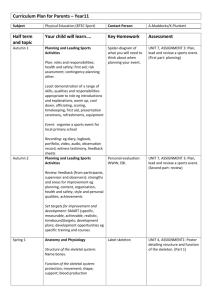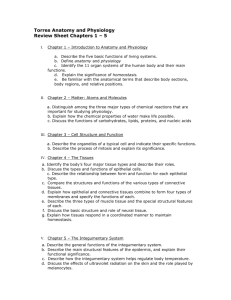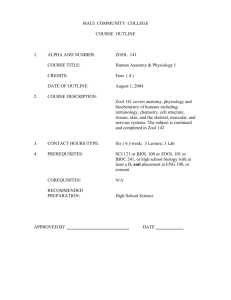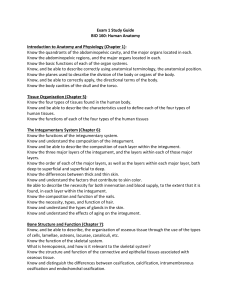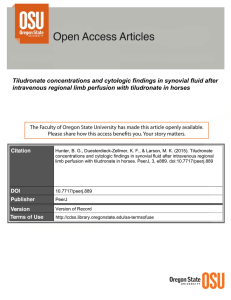Midterm Outline 2013-2014
advertisement
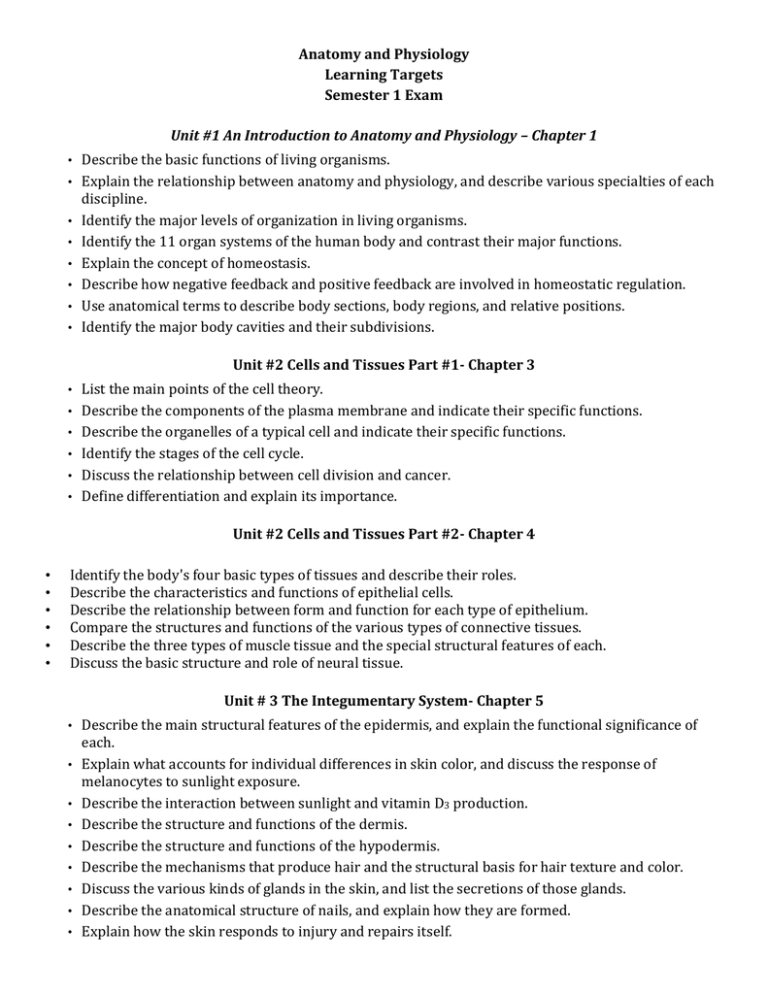
Anatomy and Physiology Learning Targets Semester 1 Exam Unit #1 An Introduction to Anatomy and Physiology – Chapter 1 • • • • • • • • Describe the basic functions of living organisms. Explain the relationship between anatomy and physiology, and describe various specialties of each discipline. Identify the major levels of organization in living organisms. Identify the 11 organ systems of the human body and contrast their major functions. Explain the concept of homeostasis. Describe how negative feedback and positive feedback are involved in homeostatic regulation. Use anatomical terms to describe body sections, body regions, and relative positions. Identify the major body cavities and their subdivisions. Unit #2 Cells and Tissues Part #1- Chapter 3 • • • • • • List the main points of the cell theory. Describe the components of the plasma membrane and indicate their specific functions. Describe the organelles of a typical cell and indicate their specific functions. Identify the stages of the cell cycle. Discuss the relationship between cell division and cancer. Define differentiation and explain its importance. Unit #2 Cells and Tissues Part #2- Chapter 4 • • • • • • Identify the body's four basic types of tissues and describe their roles. Describe the characteristics and functions of epithelial cells. Describe the relationship between form and function for each type of epithelium. Compare the structures and functions of the various types of connective tissues. Describe the three types of muscle tissue and the special structural features of each. Discuss the basic structure and role of neural tissue. Unit # 3 The Integumentary System- Chapter 5 • • • • • • • • • Describe the main structural features of the epidermis, and explain the functional significance of each. Explain what accounts for individual differences in skin color, and discuss the response of melanocytes to sunlight exposure. Describe the interaction between sunlight and vitamin D3 production. Describe the structure and functions of the dermis. Describe the structure and functions of the hypodermis. Describe the mechanisms that produce hair and the structural basis for hair texture and color. Discuss the various kinds of glands in the skin, and list the secretions of those glands. Describe the anatomical structure of nails, and explain how they are formed. Explain how the skin responds to injury and repairs itself. Unit #4 The Skeletal System- Chapter 6 • • • • • • Describe the primary functions of the skeletal system. Classify bones according to shape, and compare the structures and functions of compact and spongy bone. Compare the mechanisms of intramembranous ossification and endochondral ossification. Describe the remodeling and homeostatic mechanisms of the skeletal system. Summarize the effects of the aging process on the skeletal system. Name the components and functions of the axial and appendicular skeletons. Unit #5 Joints- Chapter 6 Contrast the major categories of joints, and link their structural features to joint functions. Identify the components of the synovial joint along with their function. Describe how movements of the skeleton occur by synovial joints. Identify the different types of synovial joints. Main Diagrams to study: Cell The General Structure of the Integumentary System Long Bone Synovial Joint You will be permitted to use a 3X5 notecard on the exam if you wish. It must be handwritten. You may use both sides. All notecards will be collected on ___________________.



